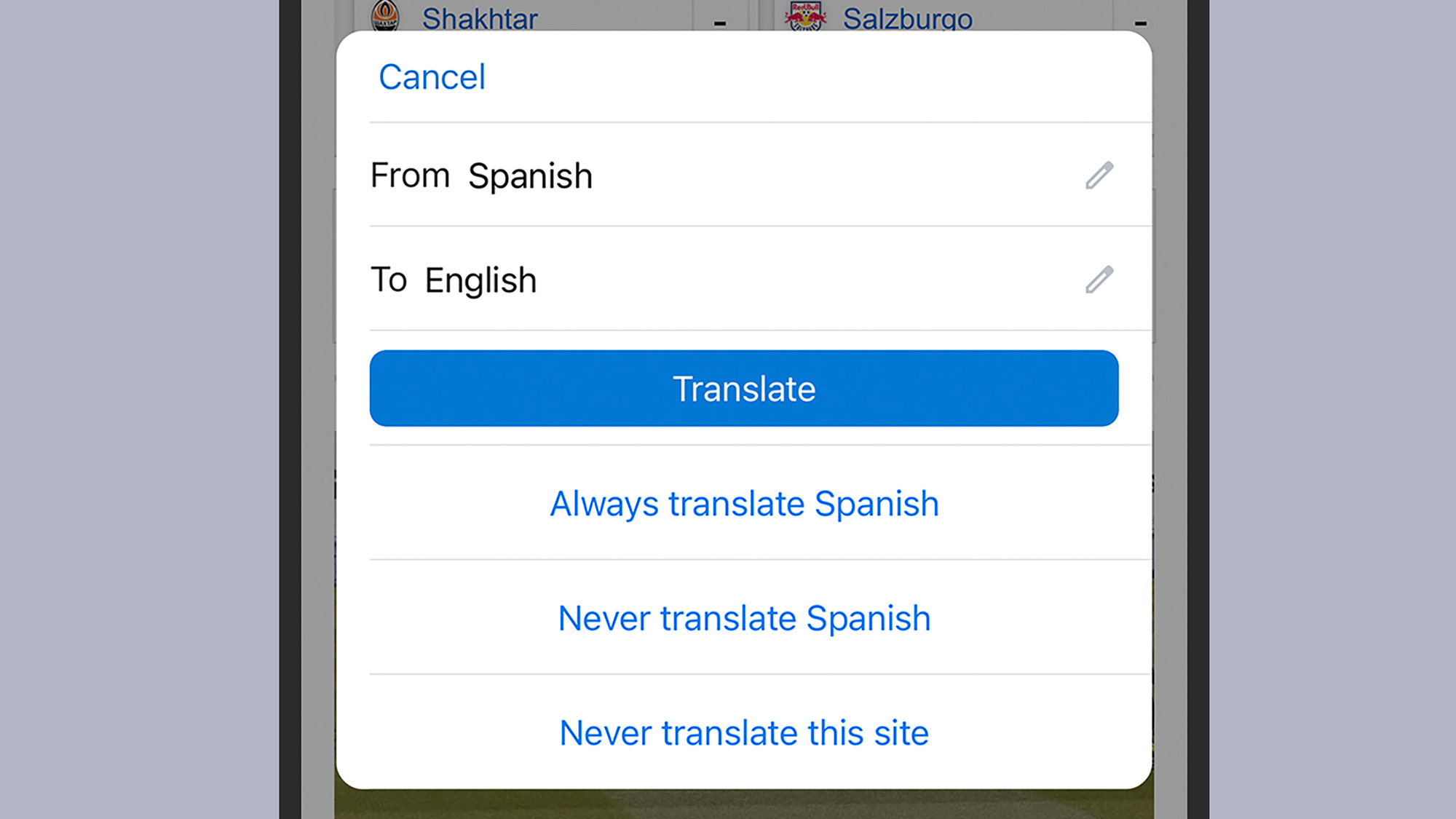

There’s a whole world outside the English-speaking corner of the internet, so you have likely come across a website in a language that’s not your own.
When you do, resist the temptation to instantly tap the back button, as modern-day mobile browsers can translate the text with just a couple of taps. The accuracy of these tools isn’t perfect but the technology behind them is getting better, and even with some errors, you’ll still be able to understand the main idea and details in a story.
What you need to do to translate a website on your mobile device will depend on your browser of choice. In most cases, the app will assume the language you’re fluent in is the one your phone is set to, which is controlled via System and Languages and input in Settings on Android, and via General and Language & Region in Settings on iOS.
How to translate websites on the Google Chrome app
Google has both a popular mobile web browser and a translation engine, so when you open up a foreign language website in Chrome you’ll see an overlay pop up at the bottom (Android) or top (iOS) of the screen, offering to translate it for you. Tap on English (Android) or Translate (iOS) to decode the content.
[Related: 7 language apps and tools to help you navigate the world]
The translation will continue throughout the website until you turn it off, so if you’re browsing around links on the site, text will still appear in English automatically. If you need to jump back to the original language on an Android device, tap it on the translation bar. On iOS, tap the Google Translate icon to the left of the address bar and select Show Original.
Tap the three dots (Android) or cog icon (iOS) on the right-hand side of the translation pop-up to automatically translate certain languages or sites. You can also manage these options by tapping the three dots in the top-right (Android) or bottom-right (iOS) corner of the Chrome interface and choosing Settings and Languages.
How to translate websites on the Microsoft Edge app
Edge (for Android and iOS) comes with its own translation engine as well. Open up a website in a language that’s not your own, and you’ll see an offer to translate it pop up at the bottom (Android) or top (iOS) of the screen. Tap to accept the translation, which will continue as long as you stay on the same site.
If Edge has detected a language incorrectly, you want translations to run automatically, or you’d like to exempt the current site from future translations, tap on the three dots (Android) or cog icon (iOS) on the overlay that appears. On Apple devices, these extra options will also appear as an additional step before translating a site.
To go back to the original language, reload the page and don’t accept the translation when prompted. You can also configure how the browser manages translations through the browser app settings: Tap the three dots at the bottom of the Edge interface, then choose Settings, General, and Microsoft Translator.
How to translate websites on the Apple Safari app
Safari comes as the built-in browser on iOS and can take care of all of your translation needs. Load up a website in a language other than your iPhone’s default one, tap the AA icon to the left of the address bar at the bottom of the screen, and choose Translate to English from the menu that appears.
You’ll also need to tap Enable Translation on the next dialog box to confirm that you’re happy with Apple sending the site’s text to its servers for translation. If you’re not, you’ll have to rely on your own language skills. Safari will remember which sites you’ve given it permission to translate for the next time you visit them.
The translation will stick until you leave the current website, so any links that you tap within the same site will be automatically translated, with no extra privacy pop-up to get through. To return to the original language on a page, tap the translation icon to the left of the address bar, and then View Original.
How to translate websites on other mobile browsers
Many other mobile browsers are available, including some that have built-in translation options (Brave) and some that don’t (Opera). You can always use the translation features integrated into your phone’s software to decode blocks of text, if you need to. It’s not quite as helpful as translating entire pages, but it’s better than nothing.
[Related: How to translate any website from your browser]
On Android, you’ll need to start by installing the Google Translate app. Open it, tap your profile picture (top right), choose Settings, and then Tap to Translate to enable the feature. Once that’s done, you should be able to select text in any of your apps and pick Translate from the pop-up overlay to do just that.
On iOS, simply select a block of text and the Translate option should appear (if it doesn’t, tap the right arrow icon). You’ll need to confirm that you’re okay with Apple analyzing the text, and if you are, you’ll then get a panel showing the translated text. You can have it read out to you, or copy it to the clipboard on your iPhone.
